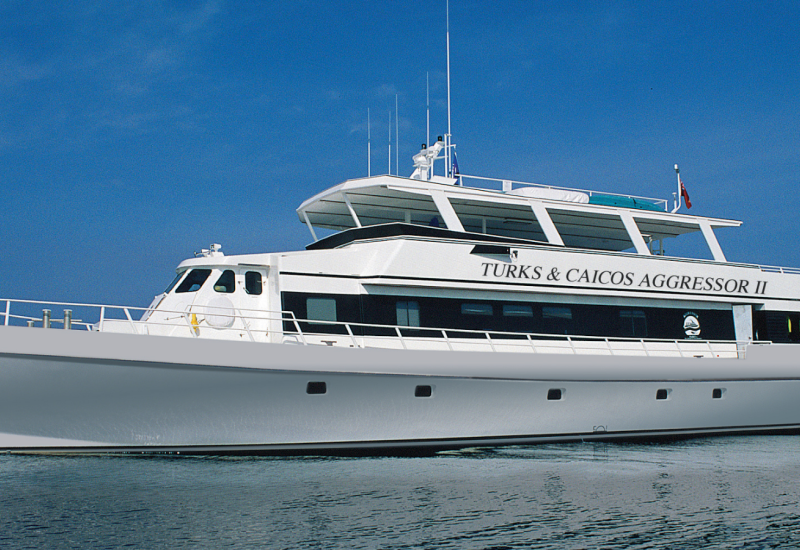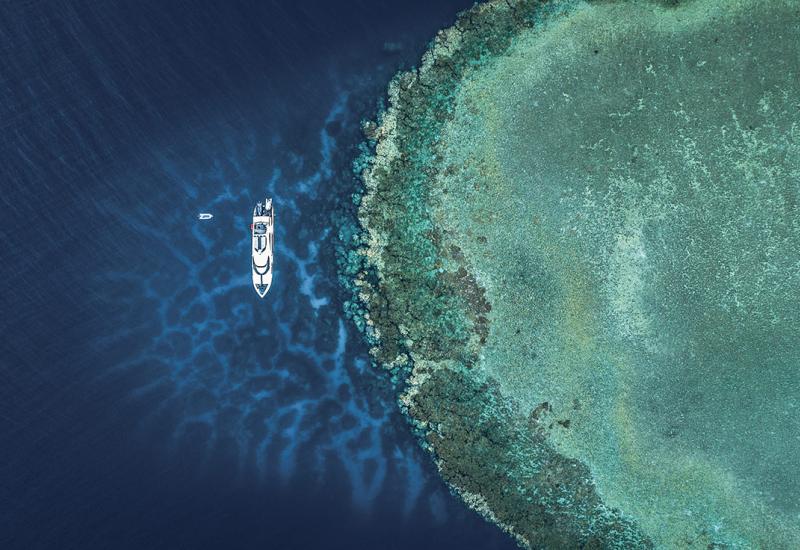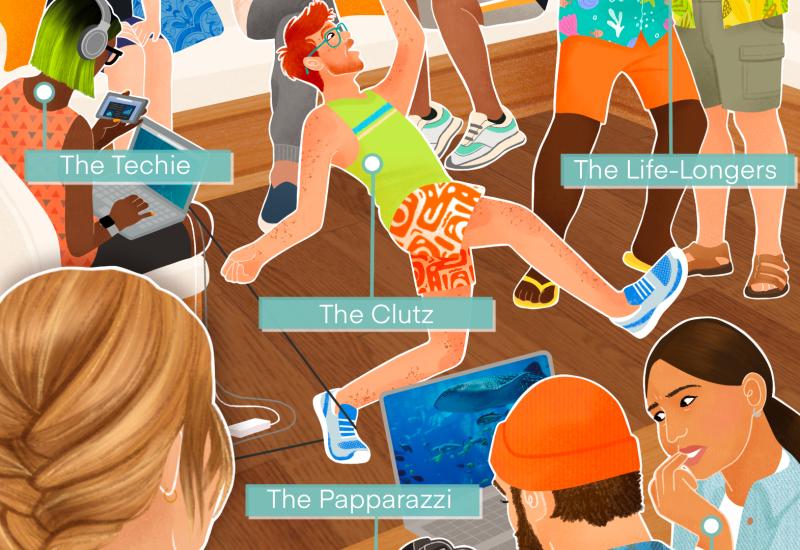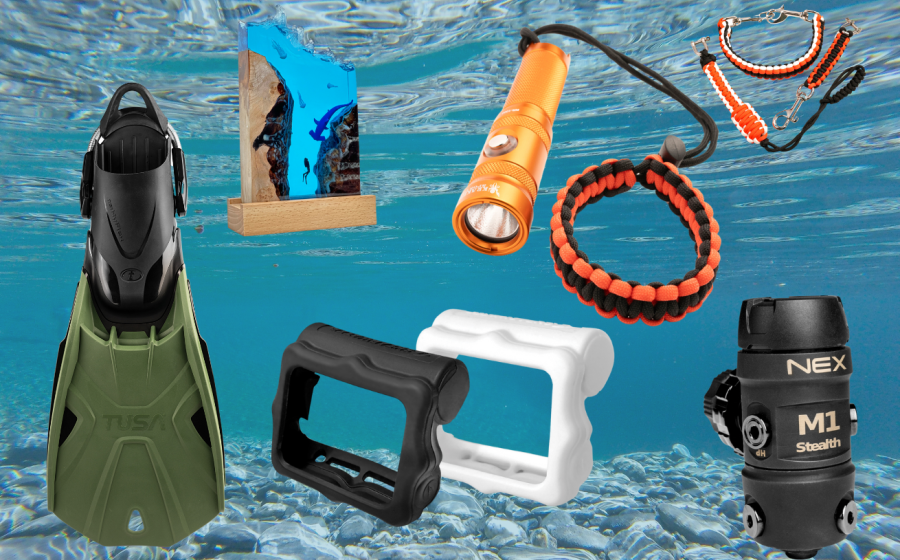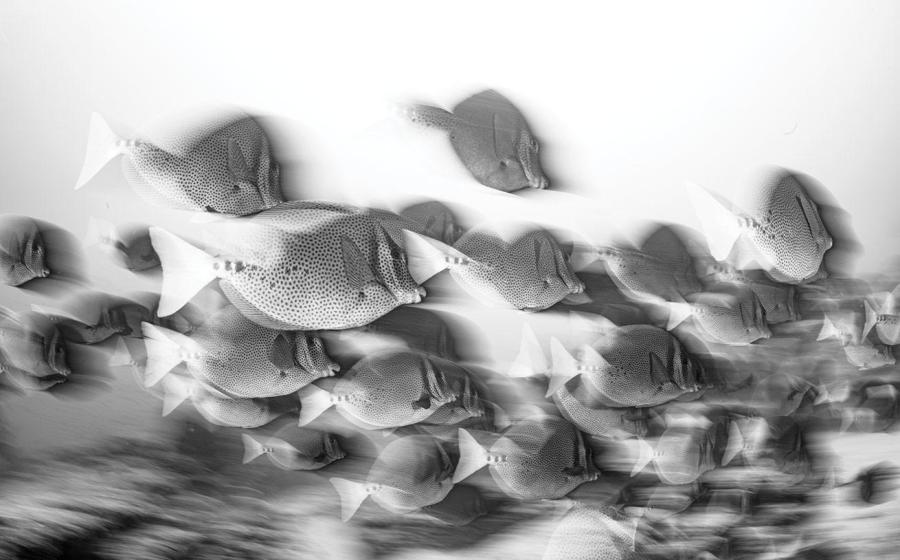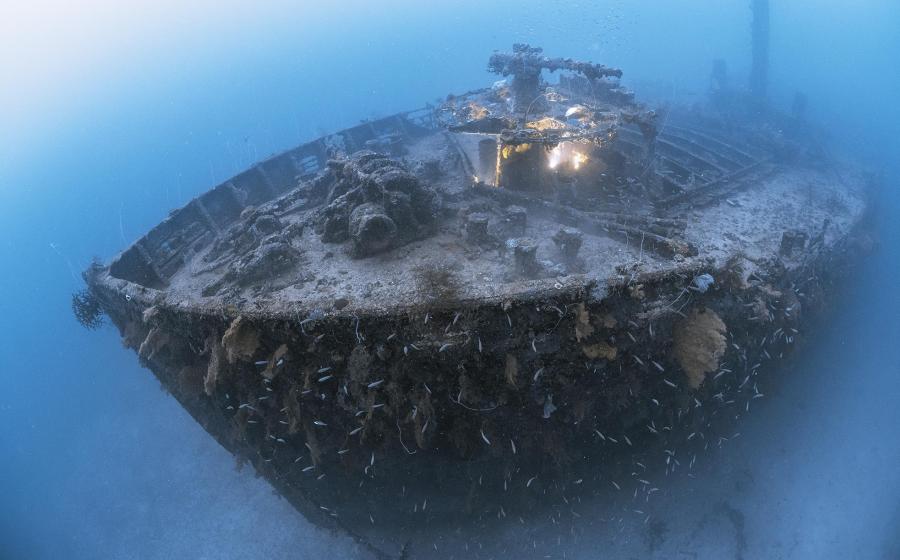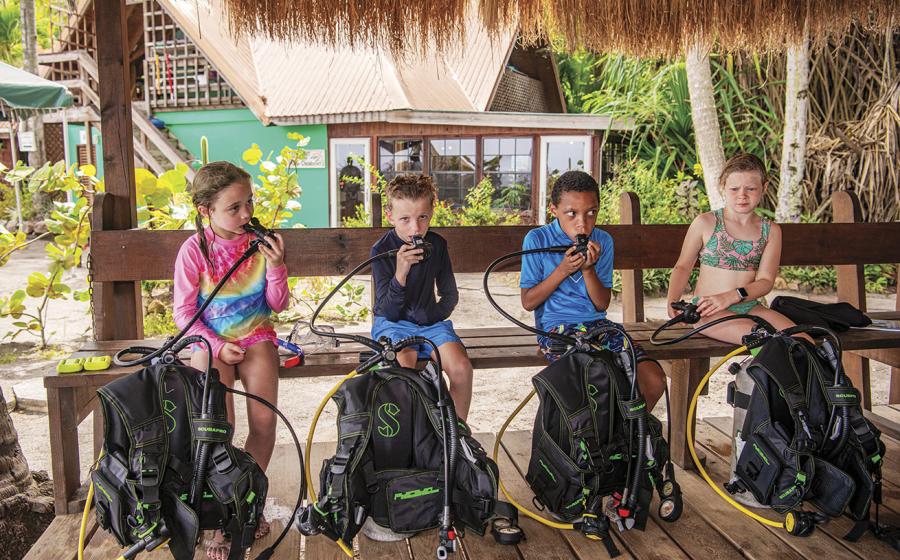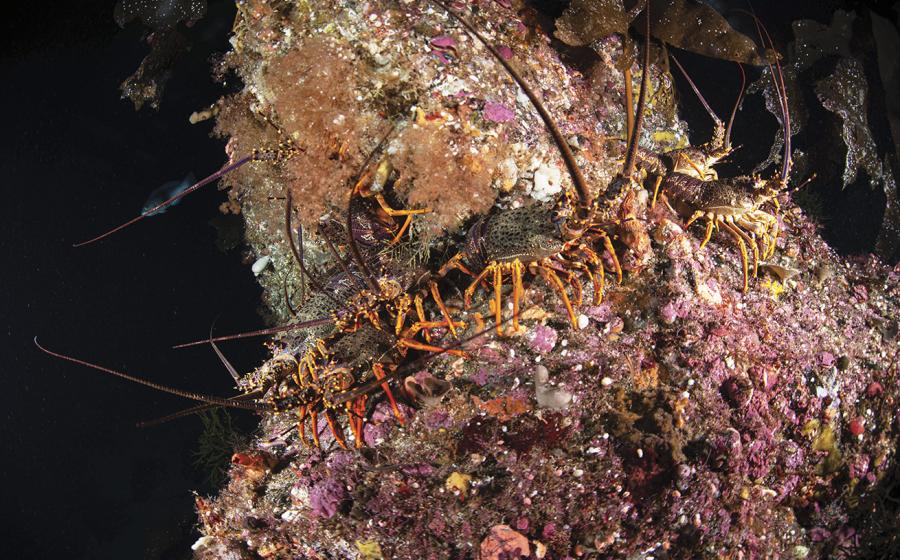The History of Liveaboard Diving
What is liveaboard diving?
Liveaboard diving is every divers ticket to world-class SCUBA experiences. The name says it all: it’s a holiday spent living aboard a specialized vessel, which shuttles passengers directly from dive site to dive site, for anywhere from two to twenty nights. Sleeping, eating, resting, and socializing all happen on the boat, as does diving; which is scheduled up to four or five times a day.
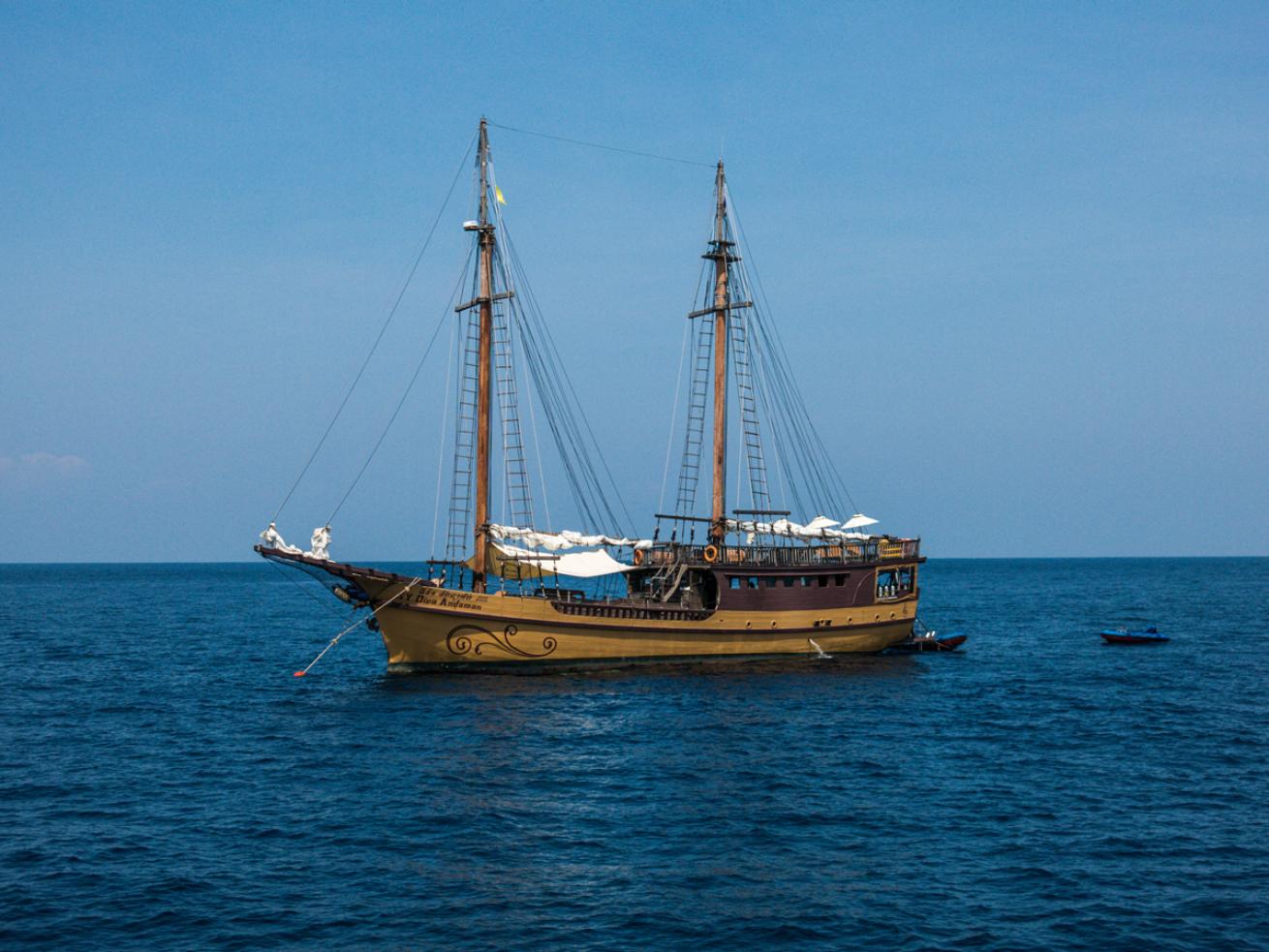
iStockNever have pristine and remote dive sites been so accessible.
Every top dive location in the world is now serviced by high-quality liveaboard fleets and for a variety of budgets. Never have pristine and remote dive sites been so accessible.
Why is liveaboard diving so popular?
Living on the sea opens up vast possibilities for a dive safari. Divers can access remote reefs like Indonesia’s Banda Archipelago or the Philippines’ Tubbataha Reef World Heritage Site. Once there, it’s possible to dive many times a day, since the vessel doesn’t need to travel back to port. Liveaboard diving fleets meet the needs of a modern diver with nitrox gas tank fills, charging stations for cameras, and screens for photo and video viewing.
The past two decades of growth in the industry has spurred fleets to compete with each other for the best food, accommodation, style, and value; which means that divers have a range of great options.
How did liveaboard diving evolve?
In 1954, Stan Waterman, a pioneering underwater photographer and videographer, spent $45,000 converting a former lobster boat into a dive boat in the Bahamas. This became one of the world’s first liveaboards. He was followed by the famous naturalist Paul Humman, who became the caption and owner of the M/V Cayman Diver in 1972. This vessel went on to be a successful Caribbean liveaboard and many operators have since refined Paul’s original idea.
What To Pack For A Liveaboard Trip
The Aggressor fleet, one of the household names in liveaboard diving, began in 1984 and now offers liveaboard safaris at more than thirty destinations around the world.
What are the most popular liveaboard destinations?
The Galapagos is like no other place on Earth. Darwin’s protected paradise hosts strange and endemic species like subtropical penguins and marine iguanas, plus a profusion of sharks, turtles, and marine mammals. To dive with these fantastic creatures, many divers choose the warm season between December and May, when the water temperature averages 24 degrees Celsius (77 degrees Fahrenheit). Hammerheads, silky sharks, and Galapagos sharks are plentiful at this time on safaris.
Indonesia tops the list for biodiversity lovers. This archipelago is the best place to see a huge range of fish, invertebrate, and coral species. The dry season from May through September is a great time to visit the country’s pristine reefs, but the Indonesia liveaboard diving season is year-round. Indonesian waters have a wide temperature range of 20 to 28 degrees Celsius (71 to 85 degrees Fahrenheit).
Egypt’s Red Sea was one of the original meccas for European divers, and it still draws visitors year-round. The water temperature is always inviting, from 21 degrees Celsius (70 degrees Fahrenheit) in winter to 30 degrees Celsius (104 degrees Fahrenheit) in summer. Egypt hosts a wide range of marine life; dugongs, turtles, sharks, dolphins, and mantas, to name but a few. The water visibility of up to 50 meters is hard to beat and there are a variety of Egypt liveaboard destinations to choose from.
The Maldives is almost synonymous with the word liveaboard. This country of atolls in the Indian Ocean is a classic liveaboard destination, with reef sharks, whale sharks, and manta rays rewarding visitors every year. The Maldives diving season runs year-round, though the rainy monsoon stretches from April to October. Water temperatures range from 26 to 30 degrees Celsius (80 to 86 degrees Fahrenheit).
What different types of liveaboard boats are there?
Liveaboards today come in a variety of shapes and sizes. Every vessel has its own interior design and theme, some of which are based on traditional boat design in the local country. Indonesia and its range of impressive phinisi boats is a great example, and some fleets have supported rainforest conservation by incorporating recycled hardwood into their hull.
The 10 Most Luxurious Liveaboards
Motor yachts and sailing yachts are both on offer, as well as a range of perks and luxury options, and a variety of passenger capacities.
What experience level is needed to go on a liveaboard diving trip?
An Open Water certification is required for a liveaboard trip, but with more advanced certifications, more options are available. A liveaboard will always specify the certification required for a given itinerary, as well as the number of previous logged dives. To choose from a wide range of itineraries, it’s best to have an Advanced Open Water certification and 100 logged dives. However, some dive safaris are suitable for beginners and divers will usually be grouped with others of a similar experience level.
What are the latest liveaboard trends?
As luxury has become more common and affordable, liveaboards have started innovating in new ways. Some cater to a specific audience, like the sturdy Argo liveaboard in the Cocos Islands of Costa Rica, which attracts big-fish obsessives and doubles as a research vessel. Others take creature comfort to a new level, such as the Scubaspa fleet in the Maldives. The Scubaspa vessels have hot tubs, sundecks, yoga classes, and up to 6 masseuses available at all times for various spa treatments. Other laudable innovations include fleets with a commitment to social and environmental responsibility. Divers looking for their perfect underwater holiday have plenty to choose from. Whilst originally divers would have sacrificed a certain level of comfort for adventure at remote dive sites, that compromise is no longer necessary and the liveaboard diving industry continues to evolve to this day.
This article was written by Kathryn Curzon, a diver and writer for Liveaboard.com
A few of our favorite liveaboard experiences:
• Liveaboard Journey through Raja Ampat
• Liveaboard Diving in Papua New Guinea
• Liveaboard through the Cayman Islands


